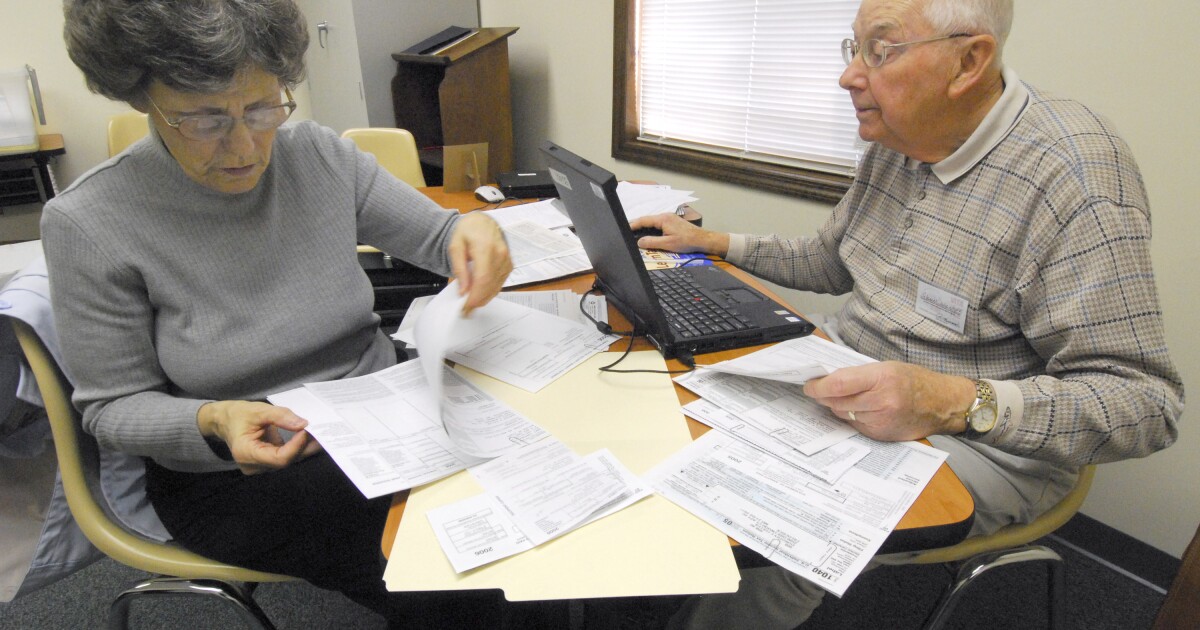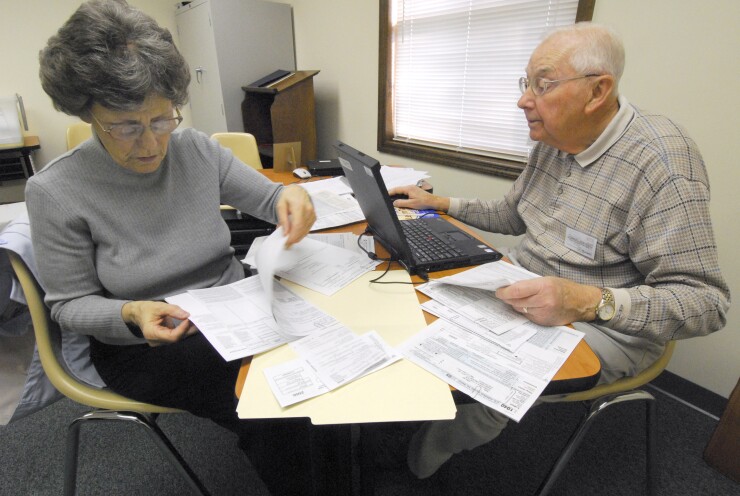When Daren Daiga’s husband had to move to another state for his job, it looked at first like her time with CapinCrouse was over.
Daiga had worked for the Indianapolis-based firm since 2013, eventually growing into a valued senior tax manager who specialized in tax-exempt organizations. She liked the firm, the firm liked her — but then her husband’s job necessitated a move to Dayton, Ohio.
In other circumstances, Daiga would have had to start looking for work at firms in the Dayton area, but CapinCrouse was loath to let an experienced manager go and Daiga herself wasn’t keen on changing employers either. Eventually, they came to an agreement that allowed her to work as a fully remote senior manager, which she did for five years before finally being promoted to partner in 2022.
“To lose a manager who knows the work and who knows the training and who knows [how to] train people and have a big impact, that would have been difficult. … I love where I worked, so I could not imagine working anywhere else and since they were able to accommodate remote workers, even fully remote workers, well before COVID … we were able to make that transition,” she said.
Daiga is a remote partner, a designation becoming more common in the wake of the pandemic lockdowns. Like remote workers in general, remote partners at accounting firms are not necessarily new, but in recent years their numbers have certainly grown. While still rare compared to their onsite counterparts, the remote partner is no longer a novel curiosity but a key part of a changing professional landscape that, increasingly, extends beyond a firm’s local geography. Experts believe they make up about 5% of the total share of accounting firm partners; if one counts those who started as on-site partners and then went remote, the estimate grows to about 10-15%.
These leaders can be found all over the country, at firms big and small, working in a variety of different practice areas and possessed of a wide range of motivations for why they chose the path of the remote partner. Some, like Andrew Pitt, a Buffalo, New York-based tax partner with Los Angeles-headquartered Top 100 Firm GHJ, wanted to change firms and had some very specific needs that, in the end, could only be met by one over 3,000 miles away.
“I knew exactly what I was looking for, so I was targeting this specific position … In looking for firms, [a recruiter and I] decided to look outside Buffalo because we didn’t think we could find what we were looking for there,” he said, noting, “It really was the culture and diversity of leadership I was looking for.”
Tabatha Broussard, a Baton Rouge-based partner at Oklahoma-based Top 100 firm HoganTaylor, was also looking for a specific kind of practice. Having already been a partner at another firm for seven years, the shift to remote work during the lockdowns opened her eyes to the career possibilities. But she didn’t want to work remotely for just anyone— she specifically wanted a firm that matched her own expertise with the energy industry, and found that HoganTaylor was what she needed.
“I wanted the opportunity to work in the field I enjoy, which is the energy industry, and HT’s energy practice is impressively developed, stacked with exceptionally smart professionals serving exciting clients, so it was kind of like ‘check that mark right there,”’ she said.
For Vivian Gant, a partner at Florida-based De La Hoz, Perez & Barbeito, the reasons were more personal: two small children. Unlike other remote partners, she is not especially far from the office, just a half-hour drive, but the way her schedule worked with her family, it was much easier to go fully remote.
“[Younger people] maybe think public accounting is just going in and getting burnt out for a few years so it looks good on your resume, then work for a private company until you die; that is not necessarily what it can be, you can still be a mom, you can still do different things,” she said.
And sometimes people become remote partners without intending it. Tom Corfin, who lives in New Hampshire, was working at a firm in the Northeast when it was acquired in 2018 by Atlanta-based Top 100 Firm Aprio. Having already worked remotely for almost a decade prior, he was well positioned to be a leader when Aprio — which had already been supportive of remote work — leaned even harder into the position during the COVID lockdown. He was officially made partner at the beginning of January 2023. “Once the pandemic hit, I didn’t have to learn to be remote … It took me probably two solid years of figuring out how to turn the switch off, how to adjust internally, how to be outside the office, the whole mentality — most people had to figure this out during and after COVID, where I was already six years ahead of the curve,” he said.
The day to day
The remote partners we spoke with reported that, in terms of their day-to-day work, there are not that many differences between themselves and their onsite counterparts. More of their meetings are online versus in-person but much of the work is the same. This is because even on-site accountants are increasingly serving clients remotely, and even if they’re not, there is still a large degree of asynchronous communication (e.g., asking for and getting specific documentation) that generally does not require physical presence. For instance, Kevin Loiselle, a tax partner with Aprio based in the San Francisco area, noted that the firm’s German clients are handled out of the Atlanta office, which works with them remotely anyway.
“I think from a client perspective, it’s a lot of the same … Our German practice partners are based out of Atlanta and work primarily with contacts in Germany, so [the lead partner] is kind of in the same boat as me. She deals with calls primarily with clients around and in Germany,” he said, adding that his own client base primarily comes from Australia and New Zealand.
Daiga, from CapinCrouse, also said her day as a remote partner does not significantly differ from the day of an on-site one. The main difference is that, as a remote partner at a smaller firm, she does not have some of the office management responsibilities that others do. In fact, she is more struck by the differences between tax partners and audit partners than by remote versus onsite ones.
“Compared to the 20-plus audit partners, we have three tax partners, so not quite as many across the firm and clients. Because tax jobs are smaller jobs, you have more jobs you handle as a partner. But also audit partners who are on site may have some office management responsibilities I don’t have. … Otherwise, I don’t know if there’s a whole lot of difference,” she said.
Similarly, Gant, the DBP partner in Miami, said the main difference between being remote and being on-site as a partner is that it is easier to print things at the office. “The big thing there: I can print things. But that’s really the only difference. But I bought myself a big professional printer recently, so now I have that. There were also free sodas and coffee [at the office], but otherwise it was pretty much the same. I can do anything from my house that I can do from my office,” she said.
Remote partners raised similar points regarding partner meetings. None of them reported feeling especially left out of key communications and decisions among the firm leaders. Many said that this was because the partners would mostly meet online anyway, due to being dispersed among several offices. So while remote partners aren’t sitting in the conference room for partner meetings, neither are the on-site ones typically. Kimberly Hastings, a Colorado-based remote partner for LA-based HCVT, noted that this is largely due to the investment firms made in communications and collaboration technology.
“Technology is an amazing thing, so even when we have monthly partner meetings for various groups — I’m on multiple committees for the firm and I’m our practice lead — a lot of these calls are already happening via Teams or Zoom because you have people in different offices. So I work with partners out in Orange County, Encino, West LA, Westlake Village and southern Pasadena, so even if we were all in the office, we’d still be on Teams calls anyway since we all have different offices,” she said.
Not everything is exactly the same, though: Remote partners say they need to be more on top of maintaining connections than people who are in an office, seeing each other every day. Danielle McGee, a Michigan-based partner for Los Angeles-based Katz Cassidy, said that, as a remote leader who is responsible for managing remote staff, she needs to be more intentional in keeping contact with people, as there aren’t those serendipitous hallway moments in the office.
“Since I came on as a remote partner, we’ve hired a bunch of remote employees and now we have them in Nebraska, Colorado, Seattle and Texas. I tend to do a little more intentional outreach to them because I know if you don’t, it’s easy for someone to not feel connected. I probably do that more than the folks in the office,” she said, though she didn’t want to imply those on-site aren’t doing this as well. “They’re doing more outreach with folks in the office or folks who are local in LA.”
Hastings, the HCVT partner, raised a similar point, saying that as a remote partner she needs to be more proactive in maintaining communications than someone on site, though she also said on site partners also have to maintain contact with people too, so it’s not dramatically different.
“I do find I’m more intentional about connecting with my team because there isn’t seeing someone in the break room or scheduling a lunch. I didn’t want to lose that, because it’s really an amazing team and I want us to keep that … . But I’d hesitate to say that’s different from other partners since my team is spread out so much, so even if I were sitting in my office in Encino, I would still not be in the office with most people on most days,” she said.
Loiselle, the San Francisco-based Aprio partner, also said he had to slightly modify how he fulfills his staff development and coaching responsibilities, since he can’t be in the office all the time, focusing more on several large sessions a year versus lots of smaller day-to-day interactions.
“There is definitely a difference in terms of staff training and development because, obviously, I’m not in the office on a day-to-day basis where someone can just swing by and say, ‘I’ve got a question about this.’ … I do end up going to Atlanta several times a year to lead technical training for wider groups of people who all get together at our headquarters; that is one of the major differences I would see,” he said.
The future
The remote partner has gone from being almost unheard-of to appearing in firms across the country and, overall, those who currently occupy these positions see themselves as part of a wider trend. While technological enablement is one reason, another commonly mentioned factor is the talent shortage. More firms are experiencing difficulty finding qualified candidates in their local geographies, and so are increasingly opening their minds to remote workers who can be leaders in their organization.
“Talent is getting harder and harder to find in the accounting profession and the pipeline is shrinking and our clients are demanding more and more,” said Randy Nail, HoganTaylor’s CEO. “So we’ve got some good old supply and demand economics going on: Accounting firms need to serve their clients, and to do that you have to be open to finding talent in different places and figuring out how to make it work within their culture. We’re already doing that and will continue doing that, and I think other firms will as well.”
McGee raised a similar point by noting the declining number of accounting graduates but also added that there’s an increasing number of retirements in the field as well that is driving the greater acceptance of remote partners.
“Firms need to be open-minded to having employees that are remote. I think our field as a whole has to have trust in our employees to begin with. They have access to Social Security numbers and all sorts of personally identifiable information for our clients, so if we can trust our employees with that, we ought to be able to trust them to get their work done,” she said.


 Economics1 week ago
Economics1 week ago
 Personal Finance5 days ago
Personal Finance5 days ago
 Personal Finance7 days ago
Personal Finance7 days ago
 Personal Finance5 days ago
Personal Finance5 days ago
 Economics6 days ago
Economics6 days ago
 Economics6 days ago
Economics6 days ago
 Economics6 days ago
Economics6 days ago
 Finance4 days ago
Finance4 days ago












